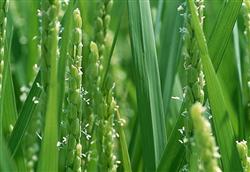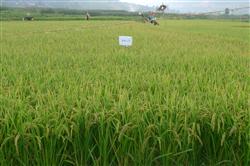How to control diseases and insect pests in the later stage of rice?

How to control diseases and insect pests in the later stage of rice? Please give guidance on rice diseases and insect pests in the later stage. Control methods can be referred to as follows: 1. Sheath blight: the recent increase in sheath blight has accelerated. According to the general survey in various towns on September 10, the average disease rate was 13.7% and the diseased plant rate was 3.3%. The disease increased significantly faster than the previous period, especially Wuyunjing varieties, sheath blight is generally serious, according to the current temperature and rice growth period. The rate of diseased points and diseased plants will continue to rise in the near future. 2. The fifth generation of gray planthopper: the population density of gray planthopper has been high this year. According to the general survey of each town on September 10, the average number of 100-hole insects was 20.6, and the number of insects in the field was relatively high. in order to lower the cardinal number, reduce the harm degree of rice in the later stage, and reduce the number of insect sources next year, drugs must be used for control. 3. The fourth generation brown planthopper: the migration amount of brown planthopper is small this year, and the occurrence degree of the second and third generation brown planthopper is moderate in this city, but the threat of the fourth generation brown planthopper still exists. The number of 100 burrow worms in the designated fields of the plant protection station was 24.6 on September 10, and the survey of each town on September 9 showed that the average number of 100 burrows was 7.9, especially in some fields that were not treated according to the prescription, which had a serious impact on the growth of rice in the later stage. 4. The fourth-generation longitudinal leaf roller: at present, the number of eggs in the field of the fourth-generation longitudinal leaf borer is still high. 35 fields were investigated in each town, with an average of 170.4 eggs, 20.4eggs and 150eggs, especially some late-planted direct seeding rice. 5. The condition of rice seedlings is very beneficial to the occurrence of diseases and insect pests. The rice varieties planted in our city this year are all large panicle and round rod varieties, with light green growth, large growth and high degree of canopy closure in the field, which are beneficial to the feeding and spawning of rice planthopper, especially Wuyunjing series varieties, which increase rapidly in the later stage of sheath blight; direct seeding rice and other late-breaking varieties, such as green leaves, long upper functional leaves, late growth period, are extremely beneficial to the occurrence of longitudinal leaf roller. 6. Abnormal temperature is beneficial to the occurrence of diseases and insect pests. Since the beginning of September, the temperature has been on the high side, and the average temperature in the first ten days of September is 26.0, which is obviously higher than that of normal years. In addition, according to the forecast of the meteorological department, the temperature is still high in the middle of September, which creates very favorable conditions for the mass reproduction of the fourth and fifth generations of brown planthopper and the fifth generation of gray planthopper. 2. Control opinions in view of the current serious trend of the occurrence and damage of diseases and pests in the later stage of rice, and in order to increase production and ensure a bumper harvest, the following suggestions are put forward for pest control in the next stage: 1. Medication time: September 15-17 in a large area. 2. The method of drug use: according to the cultivation forms, main varieties and growth process of various places, the classified guidance was carried out to ensure the control effect. The main results are as follows: (1) large area conventional rice. 20 grams of 25% pyrazidone suspension and 400 ml of 5% Jinggangmycin per mu are used to deal with rice planthopper and sheath blight; (2) direct seeding rice, conventional green rice fields and fields with late growth period, 20 grams of 25% pyramidol suspension per mu plus 40% diazine per mu. Phoxim 80 ml plus 5% Jinggangmycin 400 ml, mainly for rice planthopper, longitudinal leaf borer, sheath blight, and 20% Dingfeng Jinggang for some very late fields. Tricyclazole suspension 100g to control neck blast. The above formula is sprayed by small machine with 50ml / mu of water and 60kg / mu, or with "Gongnong 36" with 150kg of water. Especially on August 22-23 and the fields where aphidione was not used, the key points of this medication should be taken. Third, points for attention 1, has entered the sericulture season, diazine. Phoxim is sensitive to silkworms. When using medicine in rice fields near mulberry fields, we should pay attention to the direction of wind to prevent direct pollution of mulberry leaves. 2. To improve the quality of drug use, it is necessary to use accurate medicine and dosage, add enough water, spray evenly, persist in using water, and retain water for 2 mi for 3 days. 3. Diazine. Phoxim is sensitive to fish, shrimp and other aquatic animals, and safety should be paid attention to when spraying. Field water can not be directly discharged into fish ponds and shrimp (crab) ponds. Click to get more rice planting techniques click to get more food crop planting techniques
- Prev

What should be paid attention to in the later stage of planting rice?
What should be paid attention to in the later stage of planting rice? Please give an introduction to the following aspects that should be paid attention to in the later stage of planting rice: 1. Water management in the later stage: do a good job in field water management, ensure smooth heading and flowering, maintain root activity, and ensure smooth filling. Keep deep water in the field at booting stage, but it is not suitable to irrigate deep water at one time.
- Next

What should be paid attention to in the late management of rice?
What should be paid attention to in the late management of rice? Please introduce the following points to be paid attention to in the late management of rice: do not increase the dosage of pesticides blindly, it will increase the cost of pest control and cause drug damage to crops. In addition, pesticides must pay attention to the current use, to prevent the occurrence of chemistry between pesticides.
Related
- The first cup of black tea in spring, the flavor and history of tea gardens in Kenya, Africa
- The computer can not only choose potatoes, but also grow tea rice. AI will grow winter oolong tea champion.
- It is not only the inflated tea bitten by insects, but also engraved with the four seasons tea in Beipu.
- The Oriental Beauty Tea Festival in Zhuxian County takes the stage at the weekend to experience the plus-size feast of oil tea.
- & quot; Oriental Beauty Tea & Exploration of Emei in Hsinchu, the hometown of quot;
- The new variety of strawberry "Tainong 1" dessert is the first choice with mellow aroma. Crimson gorgeous
- History of Tea in Taiwan: from Wild Inner Mountain to Export Tea Garden
- Two types of Taiwan Oriental Beauty Black Tea won the British three-Star Award for Childhood Tea Xiang Zhang Jiaqi changed from pilot to champion tea maker.
- Banana species and varieties: the planting history of Taiwan Xianren banana and dwarf banana is long, is banana disease resistant?
- Coffee planting Technology: Qianjie Coffee from Seedling to harvesting

